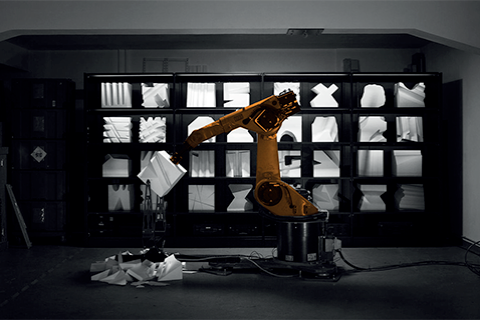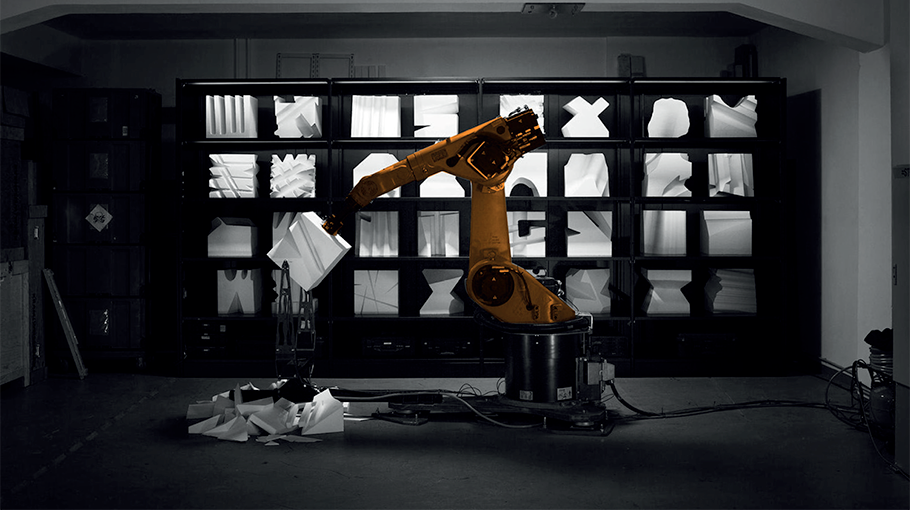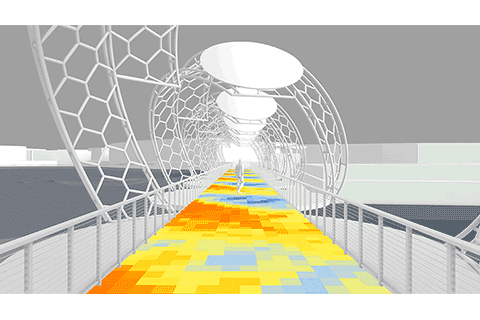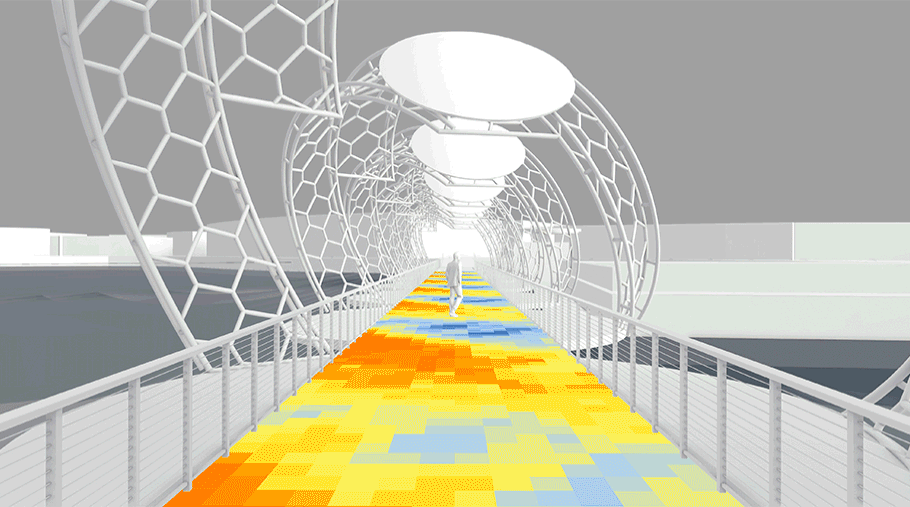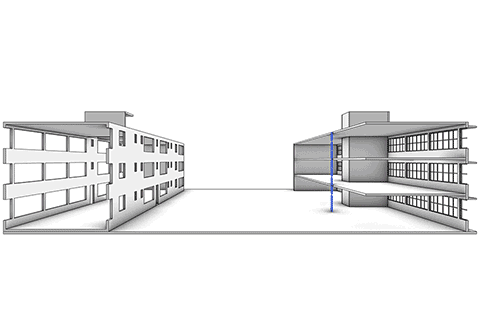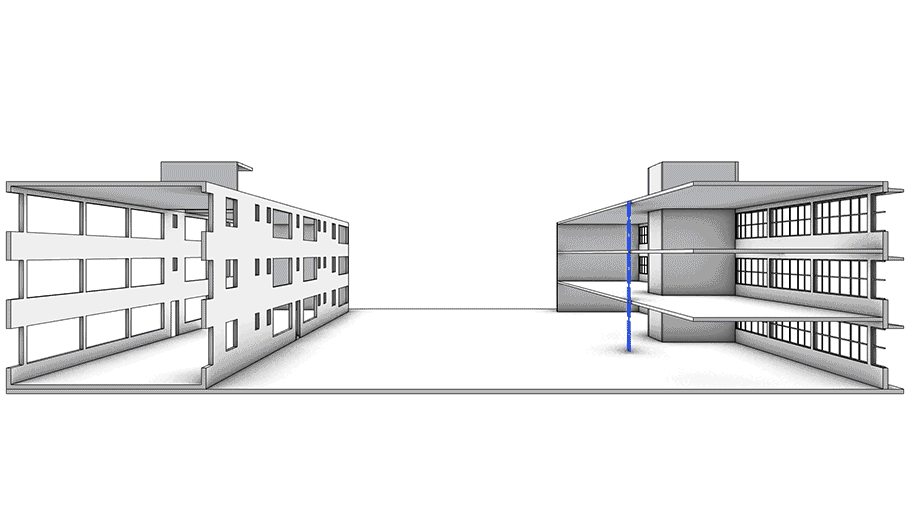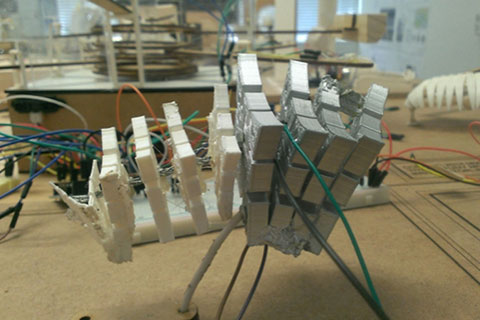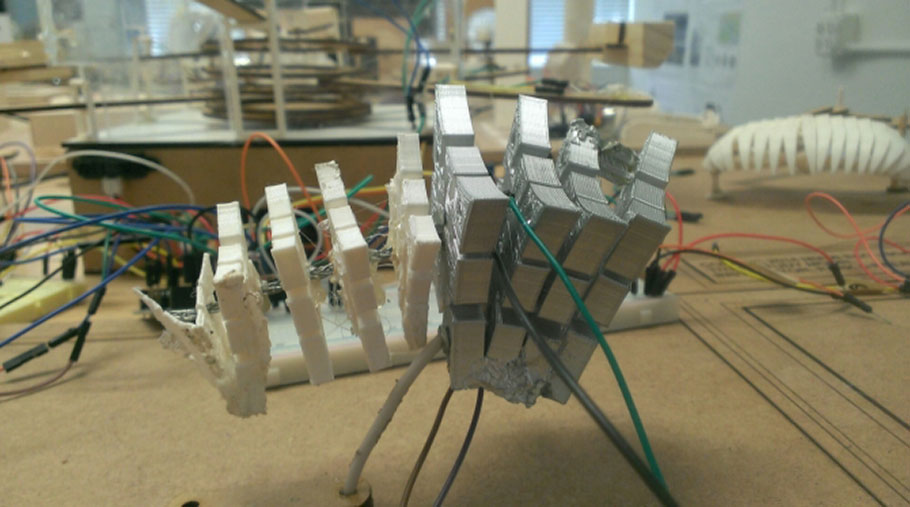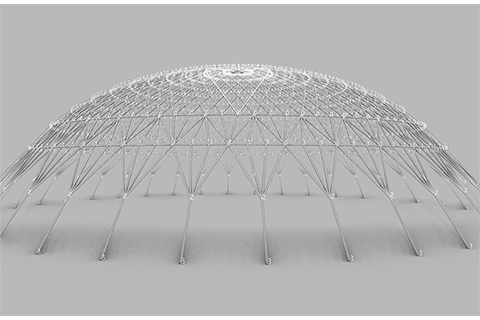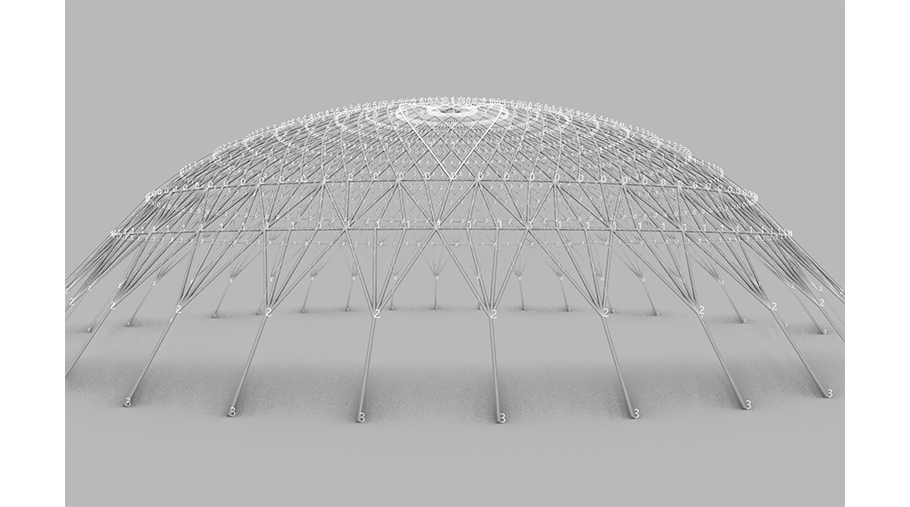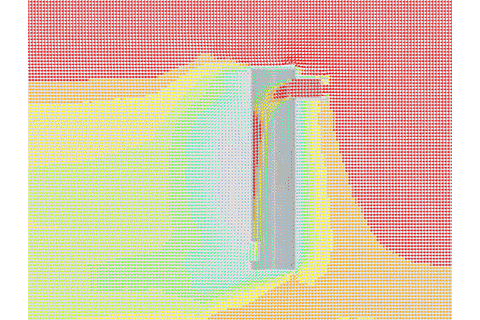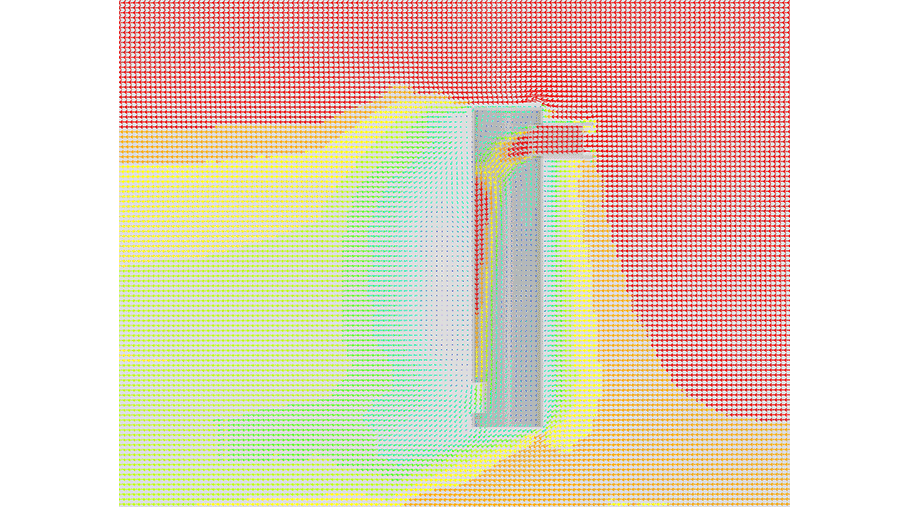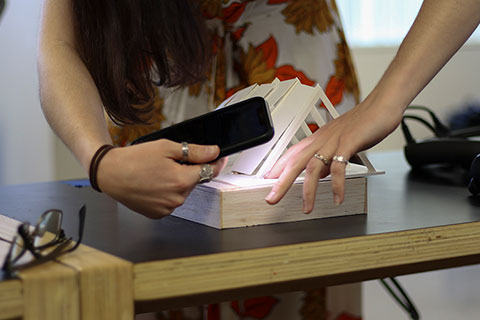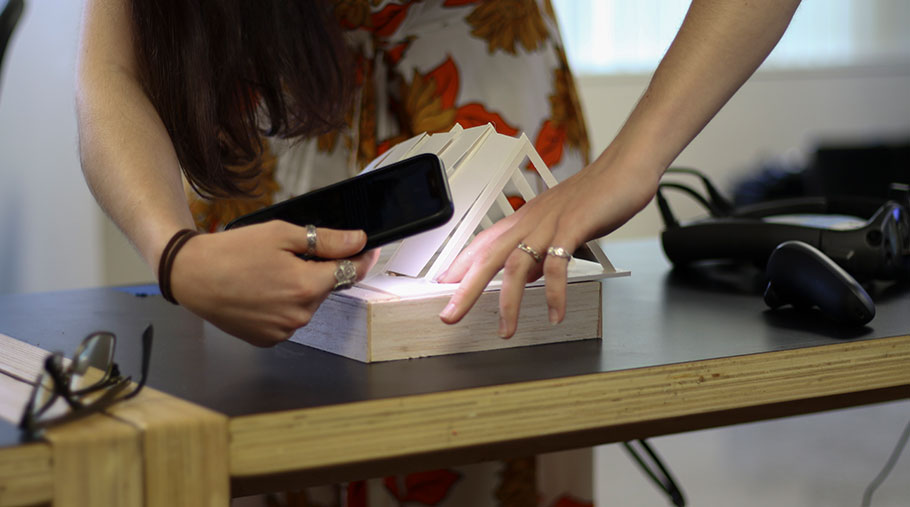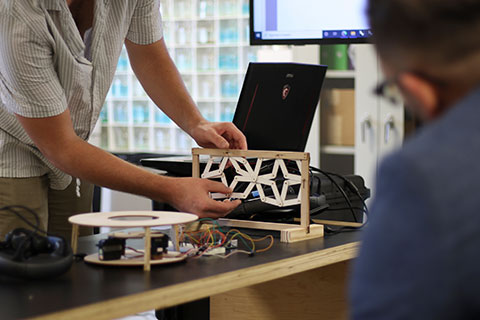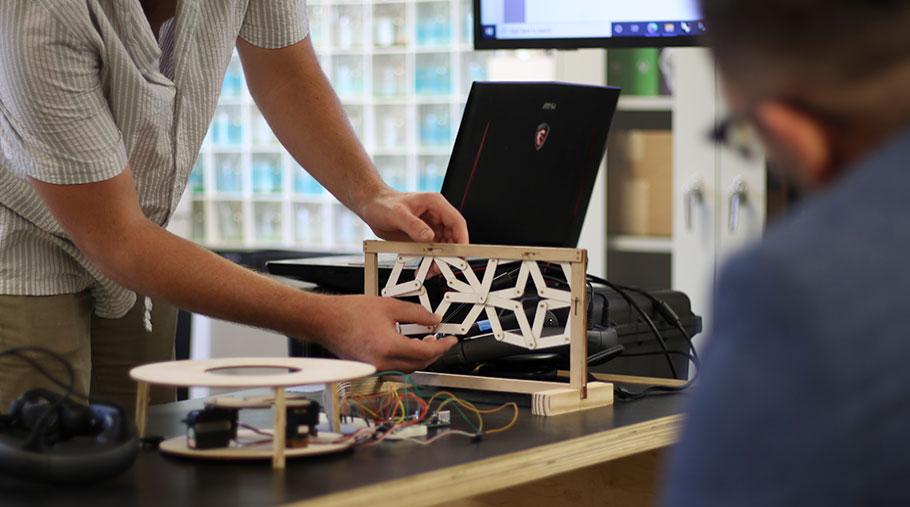
AT THE INTERSECTION OF DESIGN, SCIENCE, AND TECHNOLOGY
Meet Whitaker Redgate, a student in the Master of Science in Architecture program at the University of Miami, specializing in the Digital Fabrication & Technology program.
What inspired you to pursue a Master of Science in Architecture?
I was drawn to the Master of Science in Architecture because I wanted to go beyond traditional practice and explore architecture as a medium for innovation—where design, technology, and science converge. My work in aerospace mapping and photogrammetry gave me a systems-level perspective of the Earth, while my background in hospitality and furniture design grounded me in the human experience of space. I saw this program as the bridge between those worlds—offering the research freedom and technical depth to explore questions like: How can buildings behave like living systems? How can fabrication and AI push the boundaries of what’s possible in architecture? Pursuing this degree wasn’t just about advancing my skills—it was about building a new paradigm for how we imagine, design, and construct our environments in response to a changing planet.
What drew you to your specific track focus?
I’ve always been fascinated by how architecture can be more than just shelter—it can be an interface between humans, technology, and the Earth itself. The track I chose allowed me to explore that intersection through design theory, material experimentation, and advanced fabrication. What drew me in was the possibility of using architecture as a language to translate natural systems into built form—especially through tools like robotics, parametric design, and now AI. I wanted to be part of a future where design is intelligent, adaptive, and rooted in both ecological responsibility and technological possibility. This path felt like the most aligned with that ambition.
How did your prior academic or professional experiences prepare you for this program?
Before starting the program, I co-founded a startup focused on aerospace geospatial mapping and photogrammetry, where I led projects that merged drone technology, data analysis, and spatial awareness. That experience taught me how to think in systems, understand the built environment from a technological lens, and operate at the intersection of design and engineering. At the same time, I was working professionally in hospitality architecture and custom furniture design, where I honed my material sensitivity, spatial storytelling, and an eye for detail. Parallel to that, I had been conducting personal design research in biomimetics—studying how natural systems could inspire architectural form and function. All of this set the foundation for my work at UM, where the program has allowed me to fuse these backgrounds into a single trajectory focused on innovation, fabrication, and visionary ecological design. A background in Business from UM allowed me to bring it all together so that one day I can launch my own startup in this field.
How have the faculty, resources, or facilities contributed to your learning experience?
The faculty at UM have played a huge role in pushing my thinking beyond conventional architecture. Their openness to experimentation and cross-disciplinary work created space for me to explore ideas at the intersection of design, science, and technology. I’ve been able to engage in meaningful dialogue with professors who aren’t just academics, but innovators in the field. The fabrication lab and access to robotic arms, CNC machines, and advanced material tools gave me the platform to test ideas physically—not just theoretically. That hands-on access, combined with critical mentorship, has made the difference in shaping me not just as a student, but as a future leader in the field.
What is one unexpected lesson you’ve learned during your time in the program?
One unexpected lesson I’ve learned is the power of slowness in innovation. Coming from startup culture and fast-paced design environments, I used to associate progress with speed. But this program taught me that meaningful ideas—especially those at the intersection of nature, science, and technology—take time to incubate. Whether it’s growing mycelium bricks, prototyping adaptive systems, or iterating on a robotic fabrication workflow, I’ve learned that patience, observation, and iterative refinement are just as critical as bold vision. Sometimes, the most radical ideas come from listening closely—to materials, to context, and to process. A lot of my professors have helped me become better and I really appreciate that. I really learned how to think clearly and long term during my time here.



